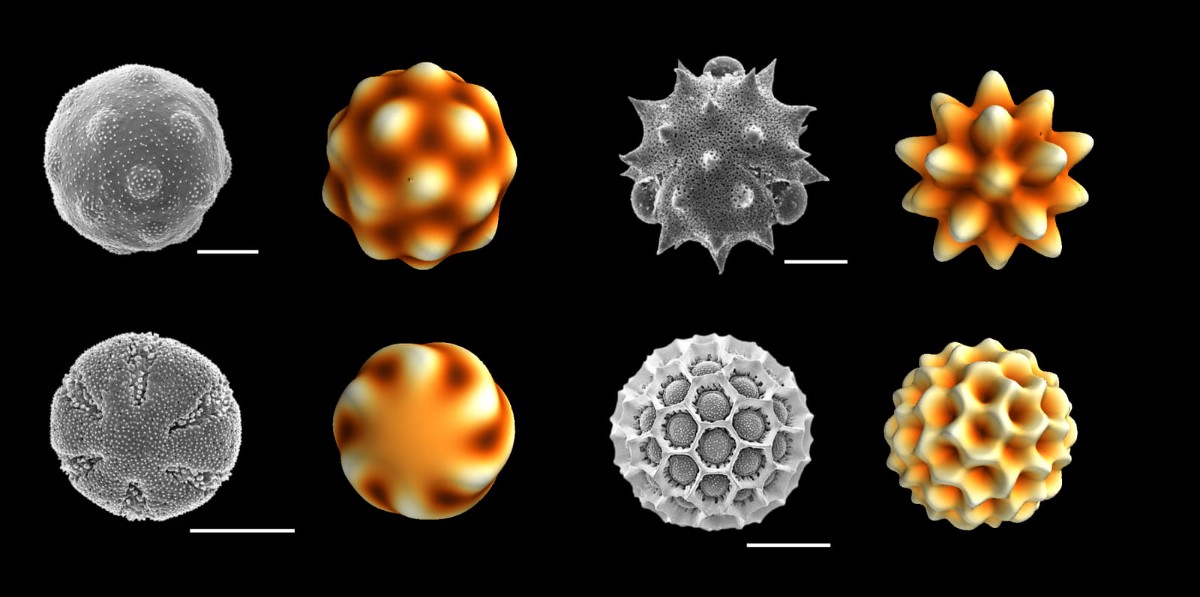Learning from Patterns in Pollen

Shu Yang, professor in the departments of Materials Science and Engineering and Chemical and Biomolecular Engineering, has a long-standing collaboration with Alison Sweeney, associate professor in the Department of Physics & Astronomy in Penn Arts & Sciences. They are interested in the way evolution has produced materials with unique optical properties, like the iridocytes in giant clams that allow them to efficiently harness solar energy.
Sweeney’s latest work focuses on another microscopic biological structure: pollen. She and her colleagues have recently published a paper outlining a mathematical model that describes how their intricate patterns form.
Next steps for Sweeney’s group include work with Yang on some of the physical properties that can arise from these patterns.
Sweeney’s group is also working with materials engineer Shu Yang of Penn’s School of Engineering and Applied Science to develop pollen-inspired materials. “Materials that are like pollen often have super-hydrophobicity, so you can very intricately control how water will interact with the surface,” says Sweeney. “What’s cool about this mechanism is that it’s passive; if you can mimic the way pollen forms, you can make polymers go where you want them to go on their own without having to do complicated engineering that’s expensive and hard to replicate.”
Read more about Sweeney’s research at Penn Today.
